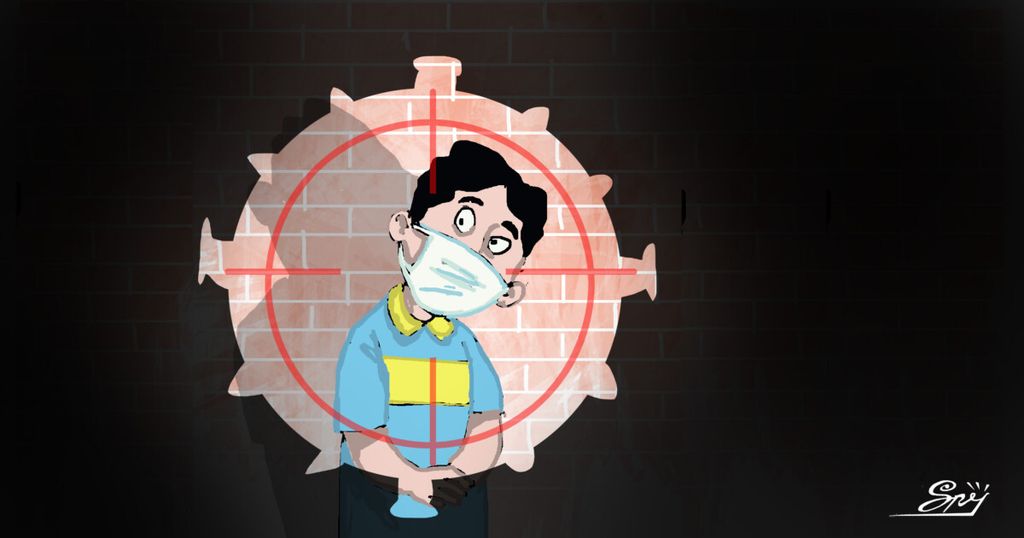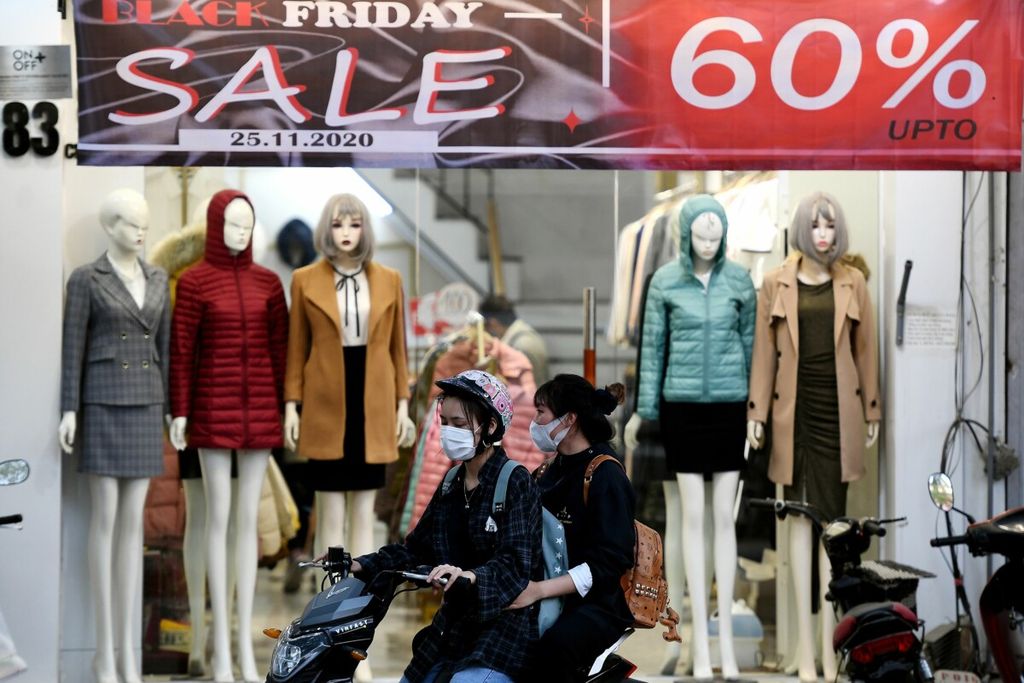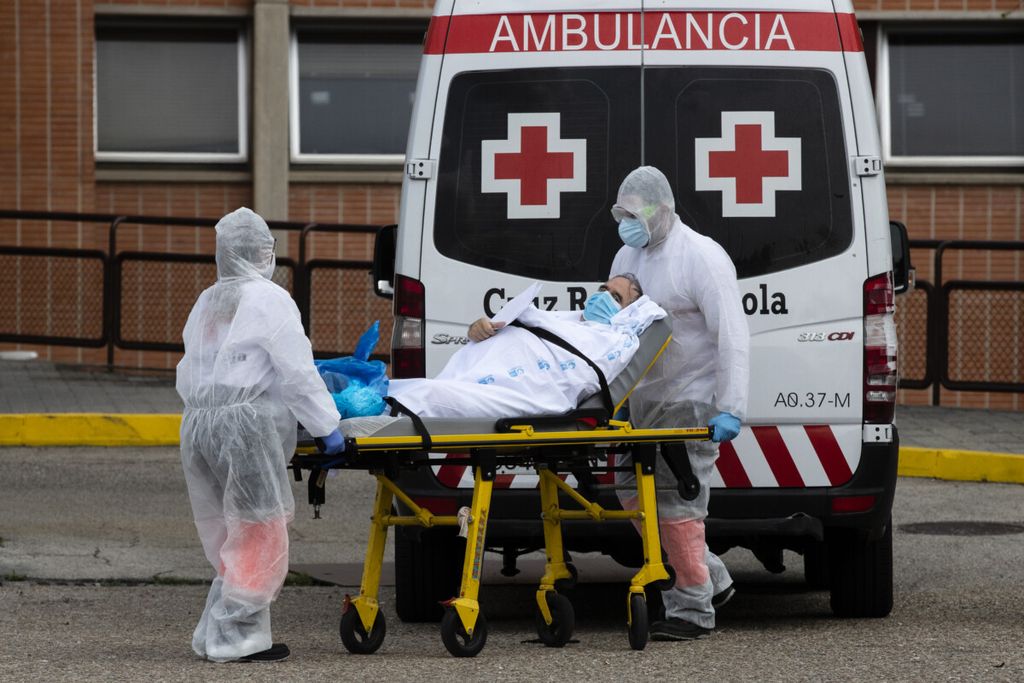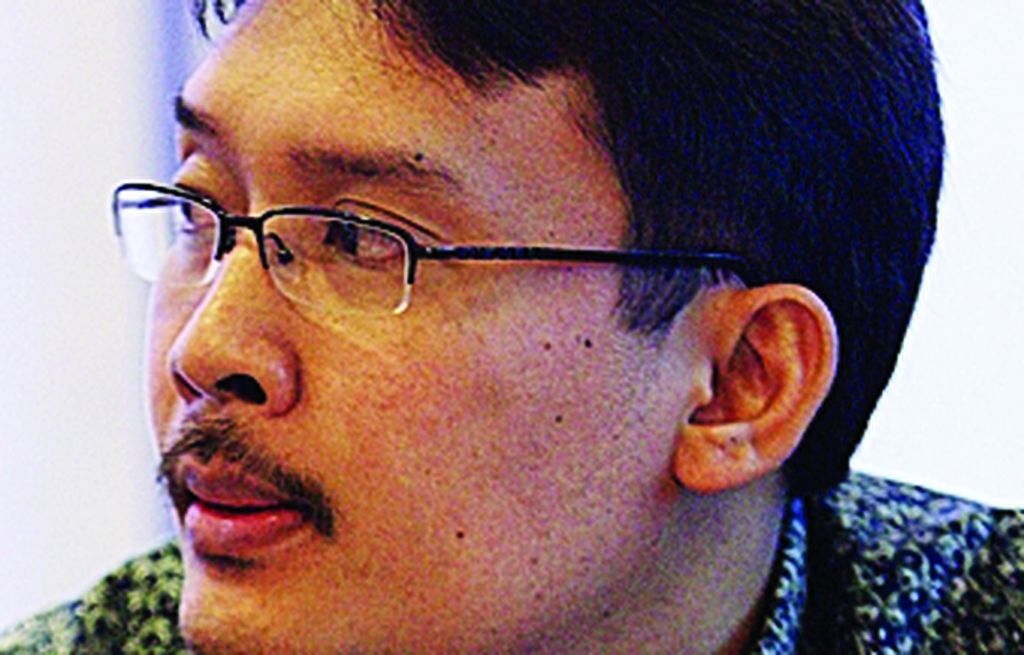Second Pandemic Turnaround
The government has responded to the situation by implementing the emergency public activity restrictions (PPKM Darurat) in Java and Bali. The government’s, economic and religious activities are temporarily contained.

It had looked as though the Covid-19 pandemic in Indonesia was under control, with the daily number of new cases brought below 5,000 by mid-May.
Vaccination rollout uptake was progressing day by day. The government-designated self-isolation facilities that had been fully packed with patients were beginning to be vacated. The treatment rooms at hospitals were also getting partly empty as the number of new infections was getting lower than the number of recovered patients. This made life prospects bloom.
However, not long after that, the impact of the Lebaran holiday, during which the ban on mudik (exodus) appeared to be bungled, coupled with the more transmissible Delta variant of the coronavirus originating in India, began to take a toll and hopes crumbled before our eyes.
Also read:
> Anticipating Health Care Crisis Outside Java
> Lessons from Surges in Covid-19 Cases
The situation has since worsened intractably, with daily new cases touching nearly 57,000, a 10-fold increase. Health workers have been widely exposed, some have died. Hospitals cannot cater to the overwhelming number of new patients. Oxygen supplies are getting scarce. Everything is suddenly turning grim.
Supply control
The government has responded to the situation by implementing the emergency public activity restrictions (PPKM Darurat) in Java and Bali. The government’s, economic and religious activities are temporarily contained.
Shopping centers are closed. Restaurants only serve takeaway orders. Dine-in is prohibited. Traffic is under surveillance. Office operations are strictly regulated, and so on. The essential sector is exempted.
The situation is more or less similar to the period when the government imposed the large-scale social restrictions (PSBB) at the beginning of the pandemic last year. The current condition is the second “turnaround” of the pandemic, which has also been endured by many other countries.
In the face of this condition, there are at least three urgent issues to deal with. First, efforts must be pursued to help increase the capacity of hospitals and health workers. Second, because the implementation of PPKM Darurat entails a similar extent of adverse impact as that brought about by the PSBB in terms of people\'s purchasing power, social protection packages become the guardrails. Third, fiscal instruments need to be consolidated again due to various changes.
/https%3A%2F%2Fkompas.id%2Fwp-content%2Fuploads%2F2021%2F07%2Fd8f01e37-63e5-4d81-bc63-c6ca5aaa9ce6_jpg.jpg)
Officers conduct isolation in the context of the Implementation of Emergency Community Activity Restrictions (PPKM) in the Tembolak Pelangi area, Mataram City, West Nusa Tenggara, on Monday (12/7/2021).
All three definitely are not easy to do. The hospital capacity has gradually increased, but it is still far from expectation. Several government-owned building facilities, including state university campuses, can be used in such an emergency situation, either as a shelter for self-isolation or a makeshift hospital. Cooperation with large mass organizations, such as NU and Muhammadiyah, has to be intensified.
Health workers must be given full vaccination so that they can strengthen their immune system against the rampaging virus. Volunteers who are seconded in Covid-19 handling tasks on the forefront as well as those involved in vaccination drive, need to be consolidated. The government has taken the right measures in speeding up the inoculation.
Also read:
> Dealing With COVID-19-Related Hoaxes
> Communication of Risk and Expectation
Another arising problem that is no less worrying is the shortage in medical treatment supply in medicines, vitamins and oxygen (including tanks). It is not known with certainty the root of the scarcity problem -- is production really limited or is there a mafia controlling the supply in the market?
Moral hazard must be eradicated because the current situation relates to a humanitarian emergency. One thing that needs to be investigated for the scarcity of medical supplies is the map of players engaging in supplies. At the beginning of the pandemic, the State-Owned Enterprises Minister made a clear statement that most medical supply came from overseas imported by a limited clique of players.
This oligopoly practice is a serious pathology because the producers or distributors can easily manipulate the supply and prices. Data reported by the Center for Strategic and International Studies (CSIS) in 2017 show that in 2002 there were four companies that controlled 100 percent of the medical supply and in 2012 those four companies still held 96.9 percent of the supply.
This oligopoly practice is very unhealthy because it causes the market to become distorted. In an urgent situation like now, one of the interventions that can be done is for SOEs to enter the arena to break up the oligopoly practice.
The government, through the state budget, can also intercept the procurement directly from foreign producing countries to ensure supply for domestic needs.
Balanced growth
As the economic growth in quarter III-2020 to quarter I-2021 showed an increase, socioeconomic data also improved, with poverty and unemployment rates being suppressed and the social gaps being bridged. Unemployment could be overhauled significantly while poverty and the gaps slightly declined. It was an achievement worthy of appreciation in a very pressing time.
With people back in job deprivation, the pathogen of poverty and unemployment can potentially come to the surface.
The second turbulent wave of the pandemic, which has been battering since early June 2021, will almost certainly effect people\'s purchasing power again. With people back in job deprivation, the pathogen of poverty and unemployment can potentially come to the surface.

This photograph taken on December 11, 2020 shows women riding on a motorcycle past a clothing store in Hanoi. - A strong response to the coronavirus pandemic, a surge in exports and healthy public spending has helped Vietnam buck a global downward economic trend in 2020 and fast track its recovery.
Once again, the impact of the first pandemic wave in April-June 2020 is most likely back to haunt. Economic growth in Java and Bali will be declining again to leave a new crater of poverty and joblessness (including the gaps). These mapped issues certainly need further analysis.
There are two economic indicators that need careful attention. First, in contrast to the first bout of the raging pandemic, currently the virus is relatively more evenly spread between urban and rural areas. The implication is that the agricultural sector (in a broad sense including husbandry, plantations and fisheries) will become more constrained than last year.
In 2020 until the first quarter of 2021, the agricultural sector continued to grow, although the growth rate took a dip from previous period. If you look at the current situation, mitigation steps need to be accurately prepared as early as possible to shore up this strategic sector.
Second, since last year the informalization of the economy has increasingly occured due to the ailing economic activities. The weakening formal sector can still be supported through the flexibility of the informal economy. Currently, another round of swelling informal sector is very likely to occur to create economic vulnerability.
Also read:
> Improving Public Communication
The informal sector is characteristically shrouded in uncertainty, low income and protection lax. What can be done in this complicated situation?
The government and Bank Indonesia, as well as the Financial Services Authority, have taken approprite steps by formulating various economic policies, such as credit relaxation, interest rate cut, loan restructuring, productivity aid, and so on.
Beyond that, there are other policies that must be put forward, as influential economist Ragnar Nurkse suggested (1953). He stated that it was impossible for the authorities to focus only on one development indicator, such as the industrial sector (as suggested by Rosenstein-Rodan), but other interrelated sources of development had to be simultaneously developed.
For example, investment incentives in the agricultural sector are realized in a way that they can stimulate the development of primary commodity-based processed industries. Thus, the growth in agricultural production is expected to be absorbed by industry and that it can encourage informal sector actors to enter either the agricultural or industrial sector. This “balanced growth” doctrine will save the situation.
Policy execution
All stakeholders in health, economic and social sectors are aware that the way out from an emergency situation like today weighs heavily on government intervention. One of the pillars comes from fiscal policy. Even in normal times, fiscal policy moves in a very limited space, let alone in the current situation.
State revenues are low due to the free-falling economy, while on the other hand, the need for expenditure allocation is soaring. There are only two available options – turning more to loans or reallocating the budget. Incurring a large amount of debt carries the risk of falling into a fiscal trap potentially emerging in the mid-term.

Emergency workers wearing full protective suits transport a patient to an ambulance at the Severo Ochoa Hospital in Leganes, Spain, Saturday, April 18, 2020. Spain has eased this week the conditions of Europe\'s strictest lockdown, allowing manufacturing, construction and other nonessential activity in an attempt to cushion the economic impact of the coronavirus pandemic.
Short-term solutions include requesting payment restructuring and debt interest payment discounts, which is expected to slightly open room for expenditure. Spending savings and reallocation have been carried out beginning last year, but inefficiencies remain an obstacle.
Overlapping policies among the ministries and government institutions and inaccurate formulation of legal guidance for program execution deserve to be reviewed. The government continues to consolidate these two aspects so that fiscal policies become more credible and executed programs more accountable.
The key issue that needs harmonization is for the social protection package to be carried out measuredly, in a simple manner and accurately to reach the target. The two dimensions of measurability are the eligibility of assistance beneficeries and the appropriate amount of the assistance package. Here, problems in data often become a stumbling block, although in general it is getting better than last year. The amount needs to be prudently adjusted so that the social ripples can be avoided.
The social protection package must be designed to be simple both in types and distribution mechanism. The Social Cash Assistance (BST) program is one example of a simply formulated policy, as was the wage subsidy program implemented last year. The implementation of these programs only needs a small number of human resources and to go through unbureaucratic lines so as to prevent deviations.
Speed and appropriateness becomes an inseparable part in the struggle for policy effectiveness.
It must reach appropriate beneficeries quickly given that people live as if like dry weeds that are prone to fire sparks. Speed and appropriateness becomes an inseparable part in the struggle for policy effectiveness.
The hopes for the effectiveness of those programs, as evident among various social circles, are a beacon of harmony between the central government and local governments in formulating and implementing them, be it health, economy or social affairs.
The situation now is much better than a year ago. Information is more accessible and the working mechanism is more organized. However, in some respects the common view in approaching the emergency situations, such as in the case of religous practices, is not as congruent as expected. This also applies to their attitude over health and the economic issues.

Ahmad Yustika Erani
The fiscal reallocation policy by the central government should be followed by local governments, including in budget absorption and share of the fiscal burden between the center and the regions.
In the current situation, it is inevitable that citizens wail over or easily point fingers of blame for the hardship mistakes. When the social problems critically peak, what is needed is humanitarian services, as Leo Tolstoy said: “The sole meaning of life is to serve humanity.”
Ahmad Erani Yustika, Professor of Economy and Business at Brawijaya University; Vice President Secretariat’s Deputy for Economic Development
(This article was translated by Musthofid).